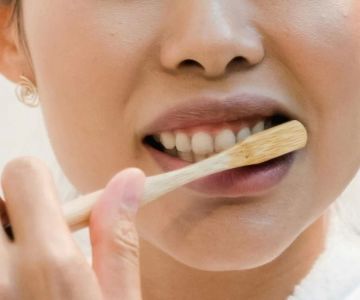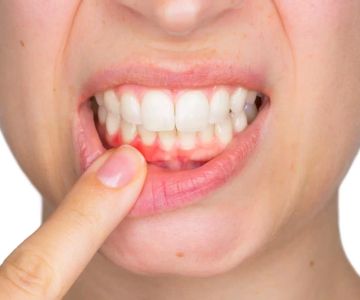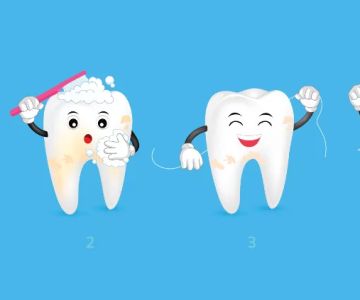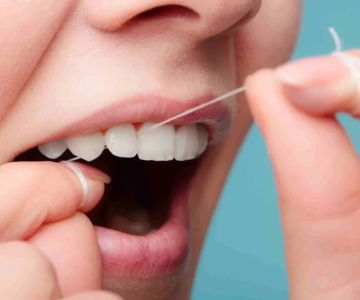Correct Brushing Technique: How to Brush Your Teeth Properly
Brushing your teeth may seem like a simple task, but did you know that many people aren't brushing properly? Incorrect brushing technique can lead to gum recession, tooth decay, and other oral health issues. In fact, brushing your teeth the right way is just as important as brushing frequently. Whether you're a first-time brush learner or looking to improve your brushing habits, understanding the correct brushing technique is key to maintaining a healthy mouth.
In this article, we will delve into the proper way to brush your teeth, explore common mistakes, and provide tips to ensure you're protecting your oral health with each brushing. We will also discuss how good brushing habits can prevent gum disease, improve tooth enamel, and keep your smile bright and healthy. Let's get started on perfecting your brushing technique!
1. The Basics of Brushing Your Teeth Correctly
The first step in correct brushing technique is choosing the right tools. Make sure you are using a toothbrush with soft bristles. Hard or medium-bristled brushes can be too abrasive on your teeth and gums, leading to wear and tear over time. A soft-bristled toothbrush is gentle on your gums while effectively cleaning your teeth.
Next, you'll want to use fluoride toothpaste, which helps to prevent tooth decay and cavities. Fluoride strengthens the enamel on your teeth, protecting them from harmful bacteria and acids. Applying a pea-sized amount of toothpaste is sufficient for each brushing session.
The key to proper brushing is technique. Hold your toothbrush at a 45-degree angle to your gums and use gentle, circular motions. Avoid scrubbing back and forth aggressively, as this can harm your gums and enamel. Instead, focus on sweeping the toothbrush gently across the tooth surface and along the gumline.
2. Brushing Duration: How Long Should You Brush?
Another common mistake is brushing for too little time. Most people brush their teeth for only 30 seconds to 1 minute, but the American Dental Association (ADA) recommends brushing for at least two minutes. This duration ensures that you're thoroughly cleaning all surfaces of your teeth, including the front, back, and chewing surfaces.
To make sure you're brushing for the right amount of time, consider using a timer or an electric toothbrush with a built-in timer. This can help you track the time and avoid rushing through your brushing session. When you brush for two minutes, it gives you enough time to clean every tooth and ensure you're removing plaque effectively.
3. The Right Pressure: Not Too Hard, Not Too Soft
One of the most common mistakes in brushing technique is using too much pressure. Pressing down too hard while brushing can cause your gums to recede, and it can also wear down the enamel on your teeth. Over time, this damage can lead to tooth sensitivity and cavities.
It's important to use gentle pressure when brushing. If you're using an electric toothbrush, many models have pressure sensors that alert you when you're brushing too hard. If you're using a manual toothbrush, focus on brushing with a light, even pressure. If you feel your wrist or hand tightening while brushing, it may be a sign you're applying too much pressure.
4. Don't Forget to Brush Your Gums and Tongue
Many people focus only on brushing their teeth, but your gums and tongue need attention too. Brushing your gums gently helps to remove plaque and bacteria that can build up in the gumline, preventing gum disease. Similarly, brushing your tongue can help reduce bad breath and remove bacteria that can lead to tooth decay.
To brush your gums, use gentle, sweeping motions around the gumline. Be careful not to be too rough, as your gums are sensitive. For your tongue, gently brush the surface with your toothbrush or use a tongue scraper. Cleaning both your gums and tongue regularly will help keep your entire mouth fresh and healthy.
5. The Importance of Brushing Twice a Day
Brushing your teeth twice a day is essential for maintaining oral health. Brushing once in the morning and once before bed ensures that you're removing food particles, plaque, and bacteria that accumulate throughout the day. Morning brushing helps freshen your breath and start your day off with a clean mouth, while evening brushing removes the buildup from eating and drinking during the day.
Additionally, brushing before bed is particularly important because it helps prevent plaque buildup overnight, which can lead to cavities and gum disease. Brushing your teeth before bed also helps to eliminate food particles and sugars that attract bacteria while you sleep. It’s crucial not to skip this step, even when you're feeling tired!
6. Flossing: A Crucial Complement to Brushing
While brushing is important, it doesn't remove all of the plaque and food particles, especially between your teeth. This is where flossing comes in. Flossing once a day helps to remove debris and plaque from between your teeth and along the gumline, areas your toothbrush can't always reach.
Flossing can prevent gum disease, cavities, and bad breath. To floss correctly, break off about 18 inches of floss and wrap most of it around your middle fingers. Gently guide the floss between your teeth and move it in a "C" shape along each side of the tooth. Be gentle to avoid injuring your gums. Once you've flossed all of your teeth, rinse your mouth with water or mouthwash to remove any loosened debris.
7. The Role of Regular Dental Checkups
Even with the best brushing habits, regular dental checkups are essential for optimal oral health. Dentists can spot early signs of issues like cavities, gum disease, and plaque buildup that may not be visible to the naked eye. By visiting your dentist regularly for cleanings and checkups, you can catch any potential problems before they become major issues.
Your dentist can also give you personalized advice on improving your brushing and flossing techniques. If you're struggling with certain areas or techniques, they can provide guidance and recommend specific tools to make your routine more effective. Don't skip those biannual checkups—they are a key component of a healthy smile!
Conclusion: Perfect Your Brushing Technique Today
Correct brushing technique is essential for maintaining healthy teeth and gums. By brushing gently, using the right tools, and following proper timing and pressure guidelines, you can avoid many common oral health problems like cavities, gum recession, and tooth sensitivity. Don't forget to complement brushing with flossing, and ensure you're visiting your dentist regularly for professional care.
If you want to learn more about improving your oral hygiene routine or need professional advice on your brushing technique, consider visiting Dentistry Toothtruth for expert guidance and products designed to help you achieve a healthier, brighter smile.







 Westgate Dental Arts3.0 (2 review)
Westgate Dental Arts3.0 (2 review) Coventry Family Dental4.0 (247 review)
Coventry Family Dental4.0 (247 review) Familia Dental3.0 (1028 review)
Familia Dental3.0 (1028 review) Dr. Daniel S. Fife, DDS4.0 (31 review)
Dr. Daniel S. Fife, DDS4.0 (31 review) Dentistry At Suburban Square: Michael I. Wollock, DMD4.0 (1228 review)
Dentistry At Suburban Square: Michael I. Wollock, DMD4.0 (1228 review) Comfort Care Dental4.0 (1156 review)
Comfort Care Dental4.0 (1156 review) The Importance of Oral Health Education During Pregnancy for a Healthy Pregnancy
The Importance of Oral Health Education During Pregnancy for a Healthy Pregnancy Why Skipping Dental Checkups Can Lead to Bigger Oral Health Problems
Why Skipping Dental Checkups Can Lead to Bigger Oral Health Problems Best Tips for Brushing Your Teeth Properly for Healthy Gums: Essential Techniques for Oral Health
Best Tips for Brushing Your Teeth Properly for Healthy Gums: Essential Techniques for Oral Health Advantages of Porcelain Dental Restorations
Advantages of Porcelain Dental Restorations How Can Diabetes Cause Tooth and Gum Problems? Preventing and Managing Oral Health Issues
How Can Diabetes Cause Tooth and Gum Problems? Preventing and Managing Oral Health Issues Healthy Habits for Promoting Good Oral Health and Hygiene: Tips for a Healthy Smile
Healthy Habits for Promoting Good Oral Health and Hygiene: Tips for a Healthy Smile